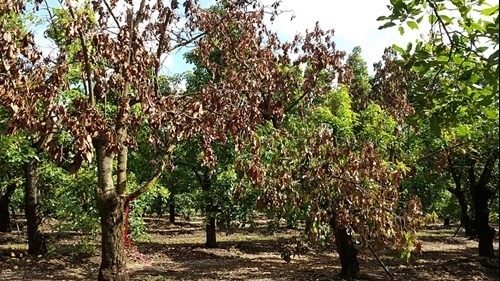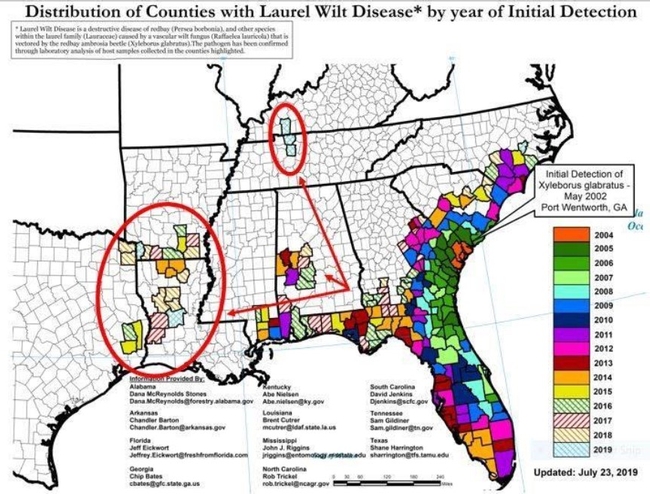
Laurel Wilt Disease in Florida and the SouthEast and Implications for CA Avocados
Laurel Wilt Disease (LWD) is caused by the fungus Raffaelea lauricola and is transmitted to host trees by the redbay ambrosia beetle (Xyloborus glabratus) (RAB). During 2002 this exotic beetle was introduced into Port Wentworth, GA, via infested solid wood packing material. Since then, LWD has spread naturally the RAB vector and humnan movement of infested wood throughout the southeastern U.S. (GA, SC, NC, FL, and MS), eliminating redbay (P. borbonia), swampbay (P. palustris) and other native members of this family. This pest has spread to most counties in Florida and to the commercial avocado-growing area near Miami.
Trees in the Lauracae, including the commercially important avocado (Persea americana Mill.) are threatened by laurel wilt (LWD). Research has shown that avocado trees are susceptible to attack by the RAB and susceptible to LWd. In Jan., 2010, the RAB was detected approximately 16 km from the edge of Florida's primary commercial avocado production area in southeastern Miami-Dade County, and in Feb., 2011 LWD was confirmed in dying swampbay trees in the same area. As of April 2012, LWD was confirmed in several commercial avocado groves in the northeastern section of the industry. Despite intensive research since 2006, no economically viable chemical control measures have been found to combat LWD. However, on-going research is promising and has provided the researcher and extension scientists the basis for suppression of RAB and the spread of LWD. Thus, detection and immediate suppression of outbreaks of LWD within the avocado production area is viewed as the most appropriate LW management strategy.
A group of Florida researchers recently visited with CA growers to about their progress confronting this problem. Their talks are available for review at this site:
http://ceventura.ucanr.edu/Com_Ag/Subtropical/Avocado_Handbook/Laurel_Wilt_Disease_in_Florida/
Photo: A Fast Death for an Avocado

laurel wilt trees

